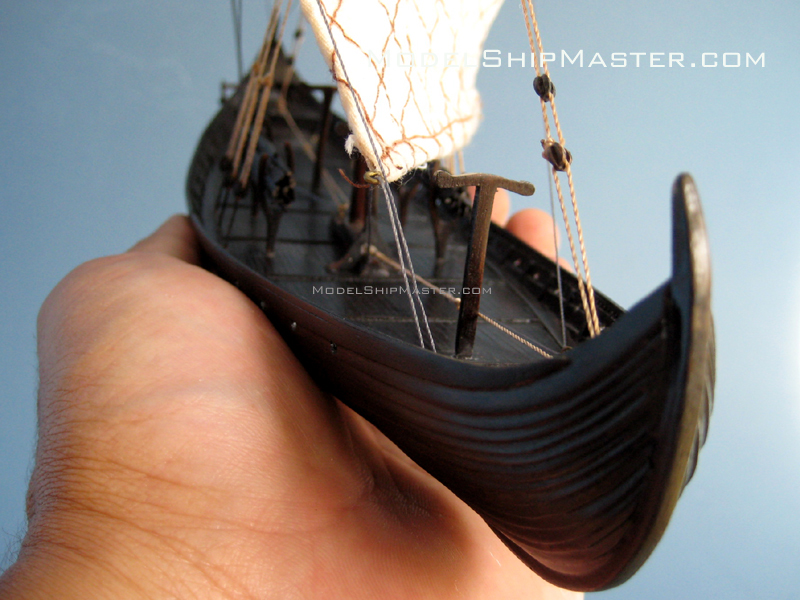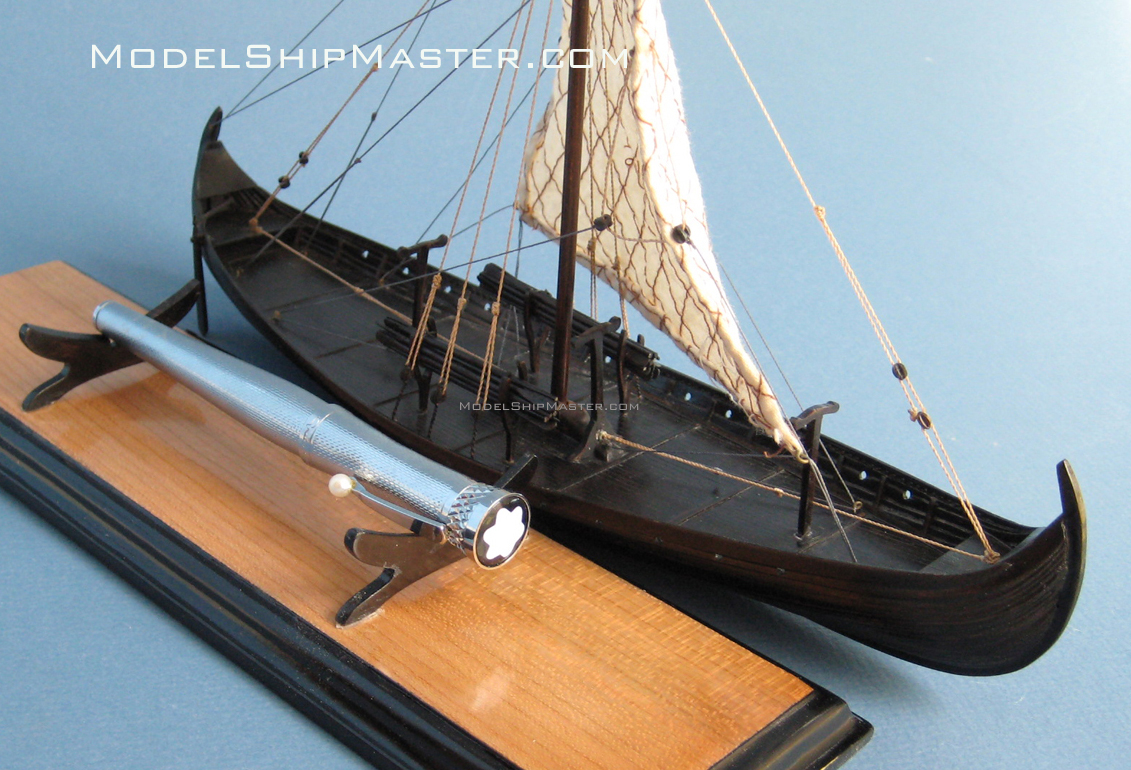|


256-bit encryption
$500,000 protection

|
VIKING
GOKSTAD ship
The Viking Gokstad is a 9th-century ship found in
a burial mound at Gokstad in Sandar, Sandefjord, Vestfold, Norway.
It is displayed at the Viking Ship Museum in Oslo,
Norway. It is the largest Viking ship ever found.
The Viking Gokstad ship is clinker-built and constructed
largely of oak. The ship was intended for warfare,
trade, transportation of people and cargo. The ship is
78.1 ft long and 16.7 ft wide.
The ship was steered by a quarter rudder fastened to a
large block of wood attached to the outside of the hull
and supported by an extra stout rib.
There are 16 tapered planks per side. Each oak plank is
slightly tapered in cross section to allow it to overlap
about 30mm the plank above and below in normal clinker style. Iron rivets are about 180 mm apart where the
planks lie straight and about 125 mm apart where the
planks turn.
At the bow, all of the planks taper to butt the stem.
The stem of the Gokstad is carved from a single curved oak log to form
the cutwater and has one land for each plank. The inside
of the stem is hollowed into a v shape so the inside of
the rivets can be reached during construction or repair.
The Viking ship Gokstad was built to carry 32 oarsmen, and the oar
holes could be hatched down when the ship was under
sail. It utilized a square sail of approximately 110
square metres (1,200 sq ft), which, it is estimated,
could propel the ship to over 12 knots (22 km/h;
14 mph). The Gokstad was commissioned at the end of
the 9th century during the reign of King Harald Fairhair.
The ship could carry a crew of between forty to seventy
men. The ship's design has been demonstrated to be very
seaworthy.


This 1:64 scale Gokstad
Viking ship model was commissioned by the
Maritime Museum of San
Diego in March 2008.
Learn more about the
Viking Gokstad ship here:
https://en.wikipedia.org/wiki/Gokstad_ship
|